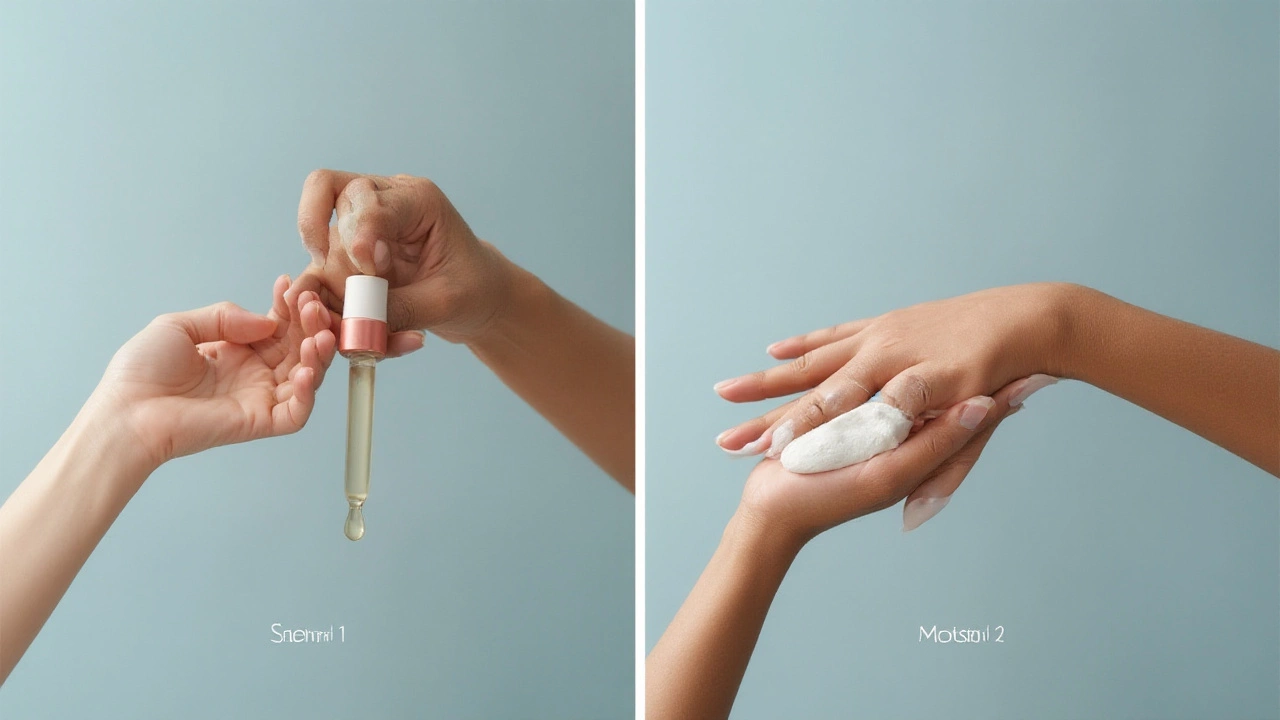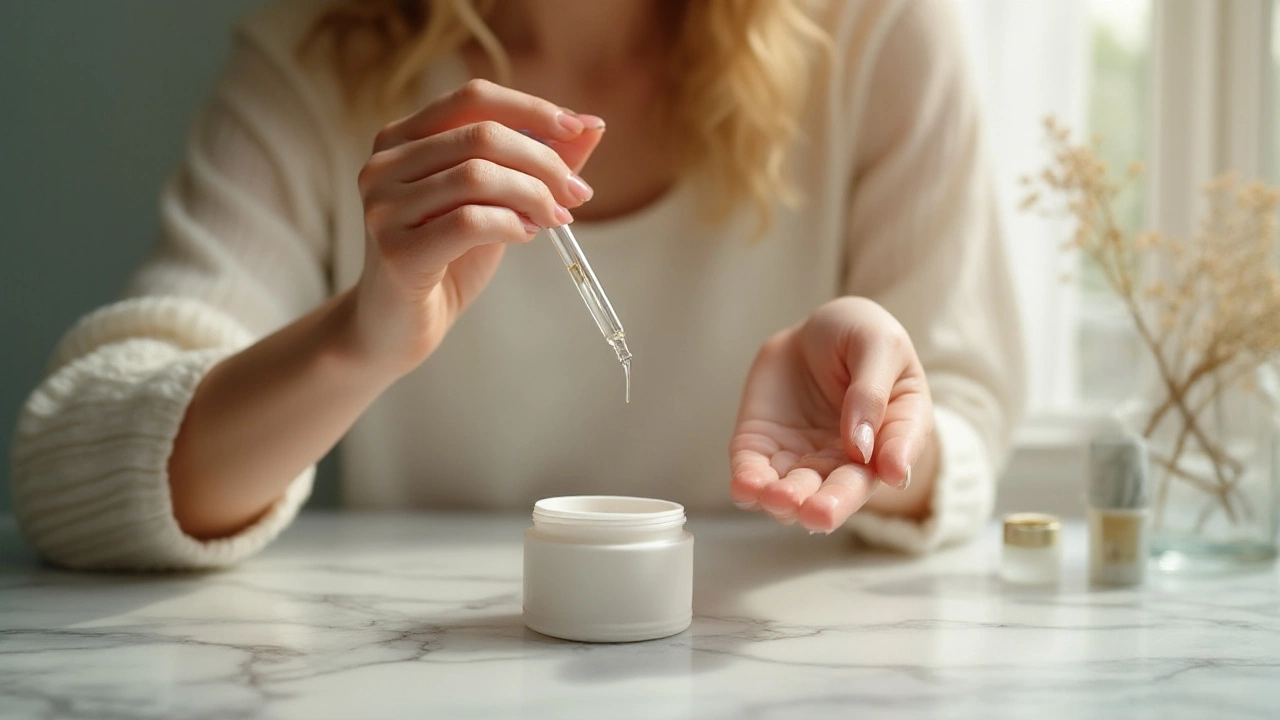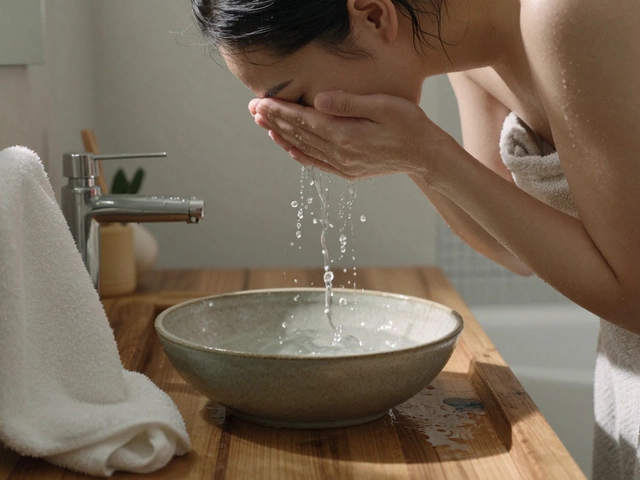Picture this: you’re standing at your bathroom sink, squinting at two pretty bottles, serum in one hand and moisturizer in the other, trying to remember what goes on first. The labels promise radiant, glowing skin, but no one mentions the order on the package. Sure, it looks like a small detail, but getting the sequence right can totally change how your skin looks and feels. So, which wins the race—serum or moisturizer? Let’s roll up our sleeves and get to the bottom of it with a natural, no-nonsense breakdown.
Why the Order Matters: The Science of Skincare Layers
If you get the order wrong, you actually risk wasting both products—and your hard-earned pennies. Here’s the thing: skin isn’t just a passive surface that anything can sink into. Every product has a purpose, and it’s crafted with a specific job in mind. A serum is made of lightweight, concentrated ingredients designed to sink in fast and go deep. Meanwhile, a moisturizer is thicker and creates a barrier, keeping all that goodness locked into your skin. If you flip the order, the thick moisturizer blocks the path, and your serum’s fancy, hard-working active ingredients basically sit on top, unable to do their thing.
Dermatologists, like Dr. Shari Marchbein from NYU School of Medicine, stress how water-based serums deliver targeted ingredients like hyaluronic acid or vitamin C straight into the deeper layers of your skin. Moisturizers then help seal them in, stopping that hydration from vanishing into thin air. Imagine it like painting a wall—primer first (serum), then paint (moisturizer) for a smooth finish that lasts. When you do it backwards, you’re wasting good paint and your time.
Studies published in the Journal of Clinical and Aesthetic Dermatology have shown that up to 50% of active ingredients in serums can be blocked from absorption if you layer over moisturizer. So, getting your order right isn’t just about habit—it’s the difference between a skincare routine that delivers results and one that leaves you underwhelmed.
Here’s a quick table to help you visualize what happens with each product in the lineup:
| Product Type | Primary Role | How It Absorbs | When It Works Best |
|---|---|---|---|
| Serum | Deliver concentrated actives deep into skin | Lightweight, fast absorption | On clean, bare skin |
| Moisturizer | Seal in hydration and shield skin | Thicker, creates barrier | After serum |
Serum always comes first. It’s all about logic: thinner, water-based formulas get in quick, and heavier, oil-based ones protect what’s already there. Whenever in doubt, stick to this golden rule—go from thinnest to thickest.
The Role of Each Product: What Are Serums and Moisturizers Actually For?
Let’s keep it real—labels can be confusing. Serums and moisturizers seem similar, but they do completely different things. Serums are powerhouses packed with a high dose of one or two actives—think vitamin C for brightening or niacinamide for balancing. They usually feel watery or a little gel-like. Their tiny molecules mean they glide through your skin’s top layer way faster than anything else, handing their benefits straight to the cells that need them most.
Moisturizers have one job: keep your skin’s moisture locked in. But there’s more than meets the eye. A good moisturizer won’t just sit there—it actually forms a thin shield, stopping water from evaporating. Humectants, like glycerin or hyaluronic acid, attract water, while occlusives (like shea butter) keep it from escaping. If you live somewhere dry or run the AC all day, you’ll definitely notice a difference when you layer on moisturizer after a serum.
Still torn? Here’s another way to look at it. If your skin feels tight, flaky, or has dull patches, it’s crying out for hydration and a barrier to keep it in. That’s the moisturizer’s job. But if pigmentation, acne scars, or fine lines bother you, serums are your best shot—they zero in on problems with laser-like focus, thanks to their airy texture and active-packed formulas. Both work together, and neither is optional if you want glowing, healthy skin.

Building Your Routine: Step-by-Step for Maximum Benefits
Skincare doesn’t have to be complicated—and you don’t need a 12-step routine (unless you truly love it). Here’s the best way to arrange your products for maximum payoff:
- Cleanse: Start with a gentle cleanser to clear away sweat, oils, and last night’s makeup.
- Tone (optional): Toners prime your skin to absorb what comes next (especially great for city-dwellers who need to fight pollution particles).
- Serum: This is your treatment step. Tap in your serum, don’t rub. Give it a minute to soak in, especially if it’s something active like retinol or vitamin C.
- Moisturizer: Lock in the hard work with a cream or gel that matches your skin type. Don’t skimp, but don’t drown your face either.
- Sunscreen (AM only): Shield yourself with broad-spectrum SPF, no matter the weather. It’s the last step and arguably the most important for healthy skin in 2025.
If you want to make products work harder, try this: go for damp skin after cleansing—serums soak in better, and moisturizer seals in extra hydration. Double-check ingredient lists—some serums (like retinol) can irritate if used with strong acids. When layering, always allow each product a moment to settle in. You don’t need to set a timer—just tie your hair up or brush your teeth while you wait.
Tips, Myths, and Making Skincare Work in Real Life
There’s a lot of hype out there—everyone has an opinion, but not all advice holds up under real-world conditions. Let’s bust a few myths and share what actually helps:
- Myth: More product equals better results. Truth: Using too much serum or moisturizer can clog up your pores or waste expensive formulas. A pea-sized amount of serum and a thin layer of moisturizer is more than enough for most faces.
- Myth: Expensive means better. Drugstore serums with proven ingredients work as well as luxury ones if you check the label for actives like hyaluronic acid, peptides, or vitamin C at a decent concentration.
- Don’t forget your neck. It ages faster and gets ignored. Spread excess product downwards for even, healthy skin that looks the same from face to chest.
- Change up your routine seasonally. Winter winds can strip your skin dry—add a heavier moisturizer. Summer sweat? Stick to lightweight gels.
- Check for expiration dates on serums—they go off much faster than thick creams thanks to higher concentrations of actives. If it smells funky or changes color, toss it.
- Avoid doubling up on strong actives. If you use a vitamin C serum, skip acids in your moisturizer. Too many actives can cause more problems than they solve—irritation, redness, and breakouts.
- Always patch test new products. Dabbing a bit on your jawline or behind your ear is quick insurance against a bad reaction—especially with potent serums.
One cool fact? In a 2024 study, dermatologists found that people who stick to a simple, consistent skincare routine (cleanser, serum, moisturizer, sunscreen) showed better skin health after six months than those constantly swapping products or using a dozen steps. Consistency, not complexity, wins every time.
Before you pick up your next tube or bottle, take a good look at your skin. Is it dull, flaky, or reacting to the weather? Are you struggling with breakouts or fine lines? If you match your products and order to what your skin actually needs, instead of falling for trends, you’ll see results. That’s the real key to glowing, healthy skin year-round. Remember: serum first, moisturizer next, and seal it with sunscreen. Your skin will thank you.









